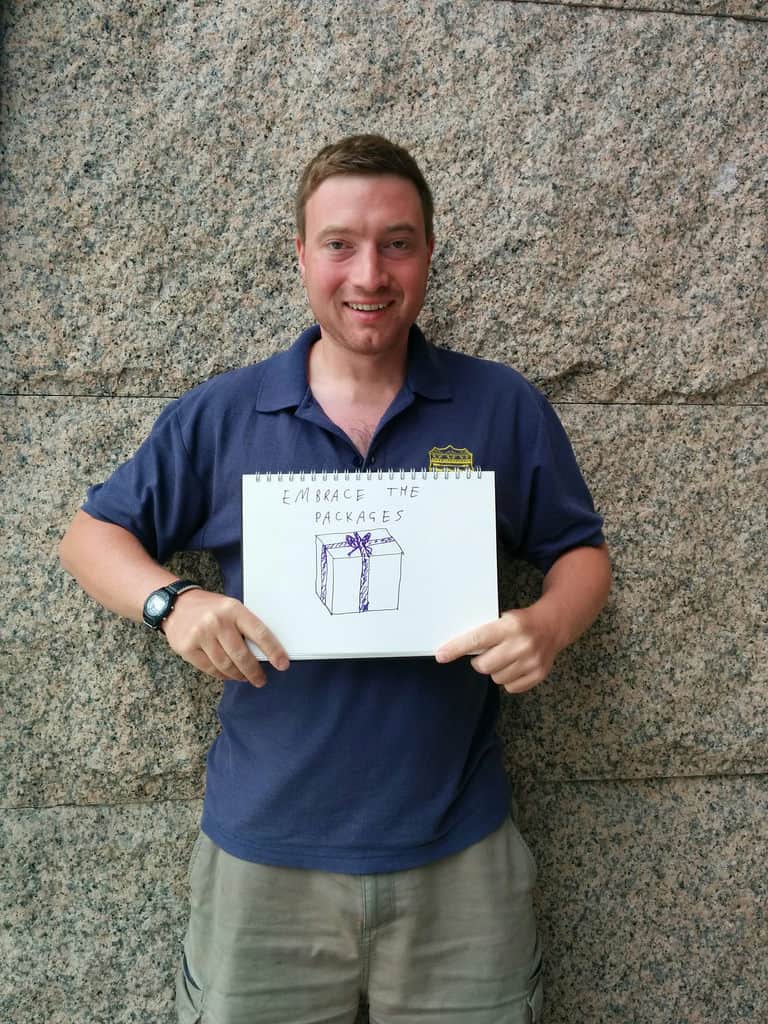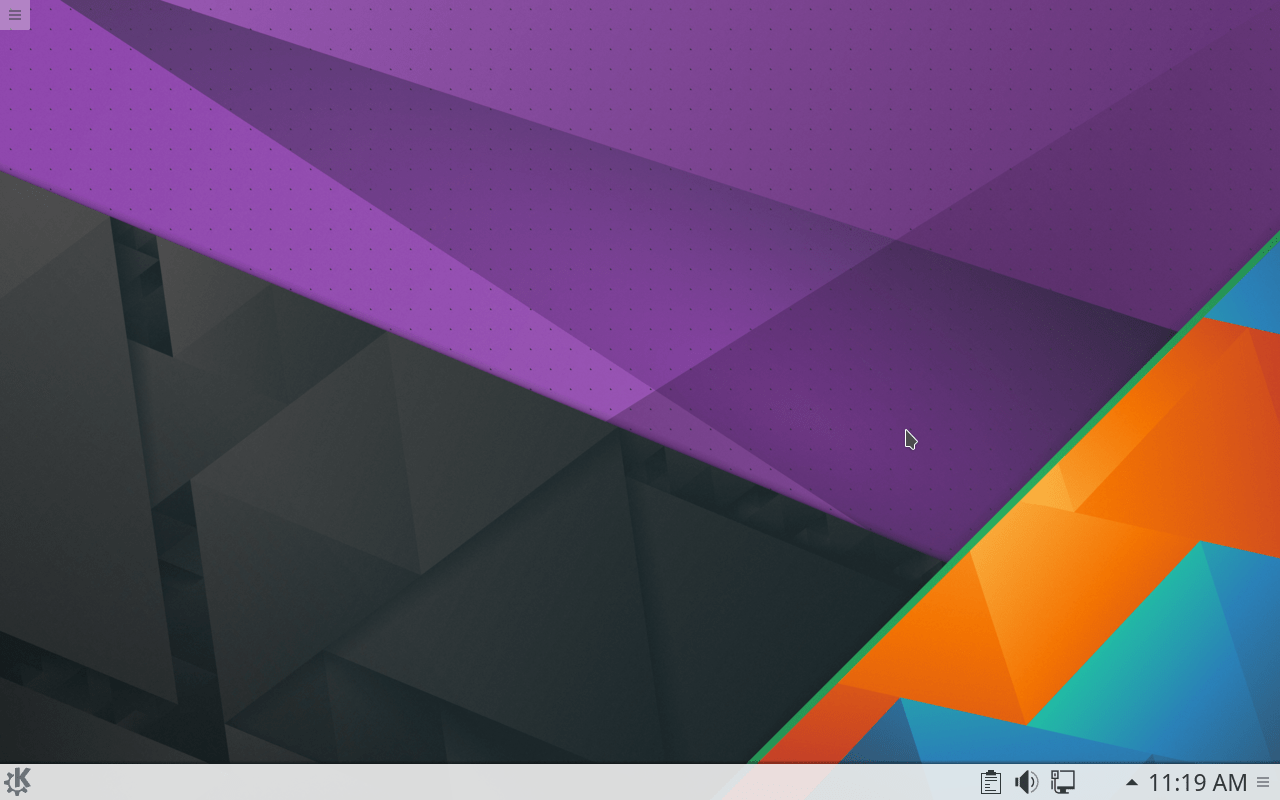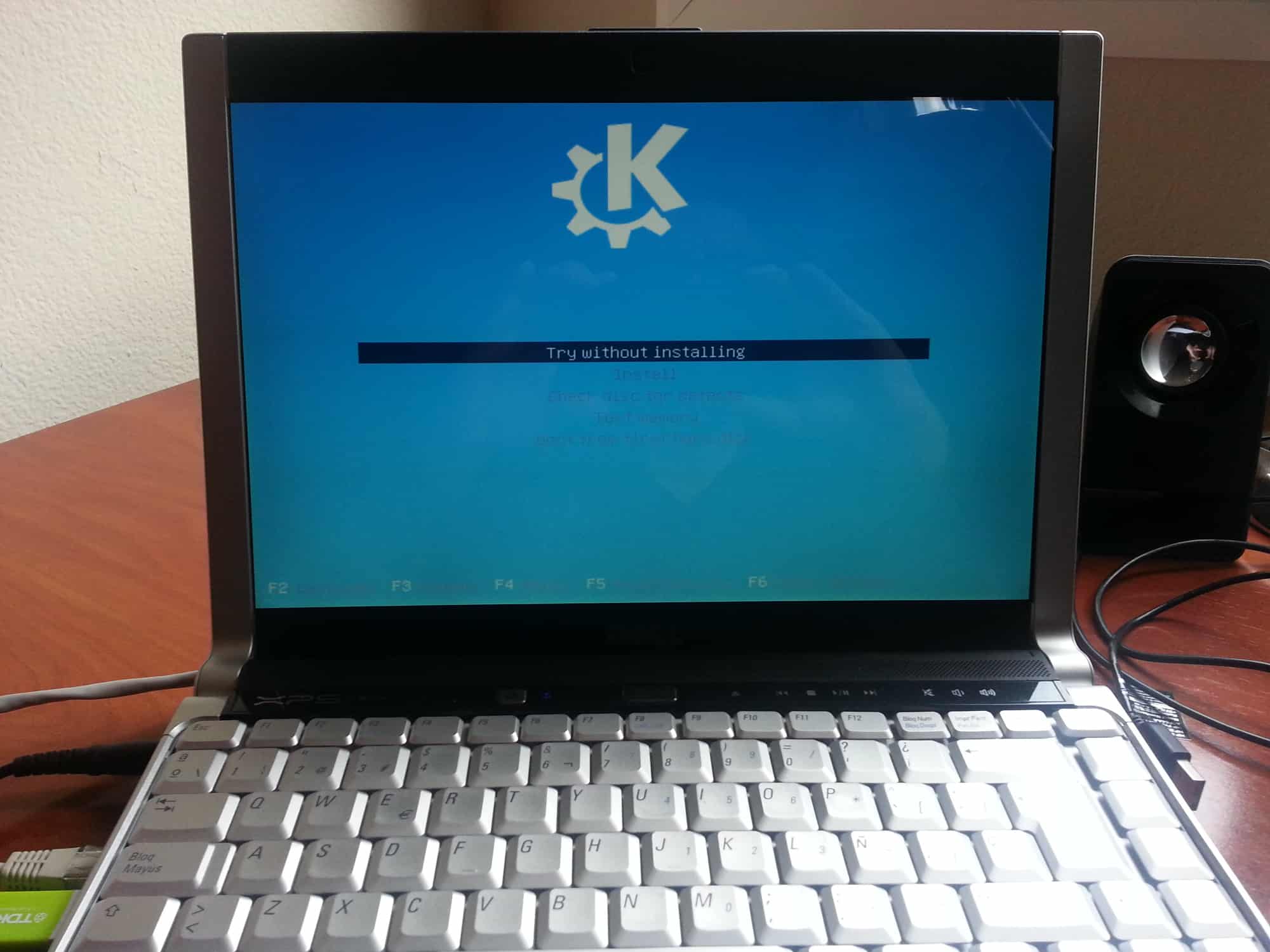KDE Neon out now – An Interview with Jonathan Riddell
Is KDE’s Neon a new Linux distribution? Is it a showcase? Is it a test bed? Neon (“tech preview”) User Edition launches today and we got Jonathan Riddell, Neon’s front runner, to explain what all the fuss is about.
 Jonathan Riddell: Hi!
Jonathan Riddell: Hi!
Paul Brown: Hi Jonathan! What exactly is it you are releasing today then?
Jonathan Riddell: Today we’re announcing a tech preview of the user edition of KDE Neon. This is the edition which is built using released software from KDE. It’s intended for computer enthusiasts and KDE fans.
Paul Brown: When you say “tech preview” does this mean “not ready for everyday use quite yet“?
Jonathan Riddell: It’s for people who read KDE Dot News and want to get the latest software today. It’s a tech preview because there are some bugs we need to squish and because it doesn’t include all the software developed by KDE.
Paul Brown: Neon draws from KDE’s git repositories, right?
Jonathan Riddell: The Developer Edition is built directly from KDE Git repositories, but that’s intended to be used by contributors and testers. If you’re a developer it’s the best way to make sure your environment is up to date without doing lots of compiling yourself. If you’re a tester it’s the easiest way to get the latest software before it’s released to test it. We’ve had that up for a couple of months now and it’s been pleasingly popular.
Today’s announcement is for the User Edition which is built from released software. So for example, wearing my Plasma release dude hat, I just announced Plasma 5.6.3 yesterday. The KDE Neon build system will keep an eye on those releases and, when they happen, it kicks into action downloading the new tars and building packages. So today’s KDE Neon User Edition will have the software released yesterday by KDE Plasma.
Paul Brown: If developers packages come from the git repositories, where do the users’ packages come from?
Jonathan Riddell: Direct from download.kde.org! We have a continuous integration system to watch download.kde.org for new software and build it as soon as its available. So the User Edition gets new builds as soon as possible. This makes a lot more sense than your traditional Linux distribution which can take weeks or months to get the updates.
Paul Brown: Neon is built on top of an Ubuntu platform. Would a user have to ignore APT and use Discover [previously Muon, a KDE package manager] instead?
Jonathan Riddell: It uses Ubuntu 16.04 LTS as its foundation. It’s a good technology which the Neon team is familiar with and gives us a good foundation for the next couple of years. It uses an apt archive so you can use all the tools you’re familiar with. Including Plasma Discover or just command line apt.

Paul Brown: Discover is acting as the graphical frontend for apt in this case.
Jonathan Riddell: Yes. It also uses PackageKit so I think it works with other package systems too.
Paul Brown: Why did you think Neon was necessary? What exactly was missing from the KDE ecosystem that made you say “I know! I’ll build this thing…“?
Jonathan Riddell: I publish stories on KDE Dot News and we do announcements of new software. But when people ask “How can I install that exciting new feature?” we don’t have a good answer. It’s usually “wait until somebody else packages it and add archive X and try that“, which is a pretty poor user experience. These days, with fancy devops technologies like Git, Docker, Jenkins, etc. that shouldn’t be the case. So there was a gap for a project that built KDE software promptly and for the various different branches that people need (git-unstable, git-stable, beta software, released software). We also felt there was a gap for a project that makes KDE software available as a KDE project. So our target market, branding and team integration is all focused around being part of the original and best open source community. And it’s fun trying to fill those gaps.
Paul Brown: Some people have said Neon is for showcasing or a testbed for developers, but, from what you’re saying, this is not true. The ultimate goal *is* to cater to end users.
Jonathan Riddell: It certainly is for end users, our founding plan says …
The user profiles for Neon are:
- Someone who relishes frequent updates of features
- Someone who cares what software is on their desktop and is a fan or curious about KDE software
We’re not trying to chase the whole world or pretend we’ll get to world domination any time soon. We’re for people who are enthusiastic about having the latest software and are fans of KDE’s products.
Paul Brown: But it is on the road map… World Domination, I mean.
Jonathan Riddell: I mostly have given up on that for now. When I started with KDE in 1999 that seemed like a real possibility, but currently there’s no sign of it happening for various reasons. So for now KDE Neon will stick with what KDE is good at, enthusiasts and enthusiasts like the latest versions, so that’s what we’ll give them.
Enthusiasts like the latest versions, so that’s what [Neon] will give them.
Paul Brown: Getting back to today’s release, I noticed that Discover is still largely empty. I read your FAQ from March and it said as much there. How many of the other issues from that list are now resolved?
Jonathan Riddell: Let’s see… “Why are there no apps?“As you said, still no apps I’m afraid, we’re wanting to get the infrastructure in place before it gets very busy with hundreds of bits of software. “No Konsole?” As before, just xterm for now. “How do I install software?” Plasma Discover seems to be working better now that we switched to PackageKit backend, but I’m not convinced it’s quite solid yet. “It has ‘stable’ in the name, does that mean it’s stable?” This is the tech preview, so no. “When will the user edition be available?” Today! “Does this include Qt 5.6?” No. 5.6.0 has a bug in it which means it doesn’t work with Plasma. We have packages in testing though, so soon. “Why no Xenial?” This *is* based on 16.04 LTS base.
Installing KDE Neon
Installing Neon is a four-step process:
- Download an ISO image from the project’s site.
- Copy the image to a USB thumbdrive. For this you can use ROSA Writer, as Jonathan recommends, or, if you are comfortable with the Linux commandline, dd. If you go for the latter, insert the thumbdrive, take note of what label the kernel assigns it (in my case it appeared as /dev/sdb) and copy over the image…
dd bs=4096 if=neon-useredition-20160418-0931-amd64.iso of=/dev/sdb
… as root.
No you have a live-bootable image.
- Insert the USB thumbdrive into your computer and restart. You should be able to boot directly into a live KDE Plasma desktop.

 To Install Neon to you hard drive, click on the K menu in the bottom left corner of your screen and choose Applications > System > Install this system permanently to your hard disk. You can see the steps for a typical installation on the right (right click to see a larger image).
To Install Neon to you hard drive, click on the K menu in the bottom left corner of your screen and choose Applications > System > Install this system permanently to your hard disk. You can see the steps for a typical installation on the right (right click to see a larger image).
Paul Brown: So Xenial.
Jonathan Riddell: Yes. That’s being released on Thursday so it’s stable for use… Mostly.
What else? “How do I install this?” Use ROSA Writer.
Paul Brown: “Install” as “on a USB thumbdrive“?
Jonathan Riddell: Yes.
Paul Brown: I used dd.
Jonathan Riddell: dd is fine too
Paul Brown: Right.
Jonathan Riddell: “Is this or is this not a distribution? You are a leader we must be told!” Same answer as before.
Paul Brown: Ah! The distribution question! Please elaborate.
Jonathan Riddell: This is something new that nobody has done before so the terms don’t quite fit. Distros care about the whole stack, we only care about KDE software. Distros tend to have a fixed release, we don’t have that. Rolling release distros tend to update all software all the time, we only care about KDE software. So it’s new and maybe needs a new word. I haven’t got one yet.
Paul Brown: Isn’t there a danger there? I am not a technical person, not too technical, anyway, but…
Jonathan Riddell: Where’s the danger?
Paul Brown: The danger is that the underlying stack becomes too obsolete.
Jonathan Riddell: One of the nice things about Ubuntu LTS is it has a hardware enablement stack where drivers and other essentials are backported to keep them relevant. And we’ll add updates of individual packages as needed. Qt is the one we’re starting with, of course. So we expect it to still be a useful system in two years time, but if not then we’ll look at updating the foundation in a sensible way.
Paul Brown: Interesting use of the term “foundation”. As I understand it, Neon is not a distro, but a framework that sits on a distro. Would that be an acceptable description?
Jonathan Riddell: Yes, that’s a sensible way to think of it.
Paul Brown: So, it begs the question, would it be possible to port Neon someday to other distros different from Ubuntu and is this something you are contemplating? Long term?
Jonathan Riddell: It’s not something we’re very interested in. As soon as you add another distro you double the work but you’ll still get many people asking if you can support their preferred distro. More likely we’ll look at using a component package system such as xdg-apps so we build software which can be installed anywhere with that. That looks quite promising and makes a lot more sense than building packages 50 times for different distros.
Paul Brown: Let me repeat I am not a technical person, and I am probably missing something. But I am looking through KDE.org’s download site right now and I can’t see any deb packages. How do you make apt work with that? Excuse me if this is a stupid question.
Jonathan Riddell: That’s the KDE source download server. If you’re releasing KDE sources you put them on there. You have to go to Neon’s server which is what is set in sources.list if you’re using KDE Neon. But we’re a KDE project so it’s part of KDE infrastructure, the KDE sysadmins have access in the normal way you’d expect and anyone in the KDE community can develop our stuff. We have our own packaging git archives and anyone with a KDE contributor account can commit to those. So if you’re a Calligra developer and you notice a problem in the packaging, there’s no faff of finding someone who can commit a fix. You just do it. Then if you want to build packages, anyone with a KDE account can click-build them.
That’s the beauty of being part of the same community: we already have 500 people who can help with Neon.
Paul Brown: It seems that support has grown a lot for Neon over the last few months. I read that Neon had only attracted a small subset of KDE developers. I was imagining 5 or 6, definitely less than 20.
Jonathan Riddell: We’ve had a great response, people are very enthusiastic about the idea.
Paul Brown: Do you have any figures of how many developers are contributing to the project?
Jonathan Riddell: It’s mostly just me and Harald Sitter at the moment. The nice thing about using modern cloudy-devopsy-buzzwordy technology is you can implement this stuff without a whole team of developers. We have some useful helpers like soee and clivejo, though.
Paul Brown: And all those other guys hanging out at #kde-neon [the IRC channel on Freenode]?
Jonathan Riddell: Some are useful user supporters, some are useful testers, some are interested contributors from other KDE projects who want to make sure we’re treating their software with the respect it deserves. Some are VDG (KDE Visual Design Group) folks who help out with vision, website design, testing plans, and marketing. And some are fans.
As for metrics, that’s always hard with free software, but I’m playing with ways to count installs, which is something KDE has always been bad at. Often for good reasons: privacy is in our vision now. Using the machine id that gets sent with release update checks I can count 565 installs of KDE Neon this month. But one other reason this is a tech preview is I haven’t implemented the opt in/out for that yet, which is something I’ll need to do. We’ll see how that number increases after today’s User Edition preview is announced.
Paul Brown: When do you think we will see a post-“tech preview” version?
Jonathan Riddell: No promises. I’m not vain enough to suggest it’s possible to measure how long software development takes, especially not when doing something completely new such as this.
Paul Brown: Ballpark.
Jonathan Riddell: I think with the user edition out we’ll need to collect the priority features and bugs to sort out such as UEFI support and maybe switching installer. Give me another month maybe.
Paul Brown: And what is on your wishlist for Neon? Are there any technical issues that particularly bug you?
Jonathan Riddell: I consider KDE Neon to be my perfect operating system, although I do wish we could get printer auto-detection added to print-manager. Alas printing isn’t a very exciting subject for most people. But, being a KDE project, we won’t fix that in Neon. We’d fix that in KDE’s print-manager, just like when we needed a boot splash for Neon: we didn’t get one added to Neon, we got one added to KDE Plasma.
Paul Brown: I must say the install process is very pretty and the logo is elegant.
Jonathan Riddell: That’s all down to KDE’s wonderful visual design group. They’re lovely people.
Paul Brown: And beyond the realm of the purely technical? I guess you would like to draw a big comunity…
Jonathan Riddell: We’re using modern social means for people to chat and ask for help with Neon, so I encourage all our users to join the Facebook and G+ groups, follow the Twitter feed, join the chat on Telegram, and the KDE forums. Come along and say hi.
Paul Brown: What can readers do to help the project?
Jonathan Riddell: Give it a try and let us know how it goes. If you have a second, fill in the testing report for the User Edition is linked from the announcement so fill in those questions. You can can also report bugs. Help out users in the various user support groups mentioned above. If you’re keen to help out, then join us in #kde-neon on Freenode and say hi and see what you want to do on the TODO list.
Paul Brown: Where can they download the ISO images from?
Jonathan Riddell: We’ve got a download page with all the images.
Paul Brown: One more thing… What’s a Twinkle?
Jonathan Riddell: Twonkle.
Paul Brown: That.
Jonathan Riddell: It’s Weegie Scots for “guapo”.
Paul Brown: Urban Dictionary begs to differ.
Jonathan Riddell: These Weegies have a strange way with compliments.
Cover Image: Neon by Karen Castens for Morguefile.com.
